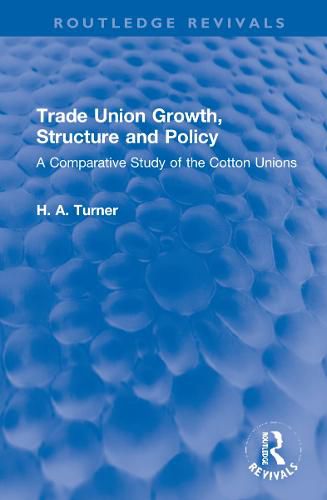Readings Newsletter
Become a Readings Member to make your shopping experience even easier.
Sign in or sign up for free!
You’re not far away from qualifying for FREE standard shipping within Australia
You’ve qualified for FREE standard shipping within Australia
The cart is loading…






First published in 1962, Trade Union Growth, Structure and Policy starts with the long history of the textile unions and their remarkable structures and techniques. By comparing these unions to each other and to other key unions, Professor Turner explores those major problems in the development and contemporary position of trade unionism which are of public interest. He reappraises the general theory of the labour movement’s evolution and is able to show that, what are essentially modern unions have existed longer than has been realized and also that ‘unofficial’ movements often repeat the pattern of very early unionism. A detailed comparison and contrast of modern unions reveals that they fall into a greater number of different types and are subject to a greater diversity of influences than is generally supposed both in formal government and in effective democracy. The author assesses the factors which have in the past have brought about a major change in trade unions and the likelihood of major changes in the future. This book is an important historical document for scholars and researchers of labour movement, labour economics and political economy.
$9.00 standard shipping within Australia
FREE standard shipping within Australia for orders over $100.00
Express & International shipping calculated at checkout
First published in 1962, Trade Union Growth, Structure and Policy starts with the long history of the textile unions and their remarkable structures and techniques. By comparing these unions to each other and to other key unions, Professor Turner explores those major problems in the development and contemporary position of trade unionism which are of public interest. He reappraises the general theory of the labour movement’s evolution and is able to show that, what are essentially modern unions have existed longer than has been realized and also that ‘unofficial’ movements often repeat the pattern of very early unionism. A detailed comparison and contrast of modern unions reveals that they fall into a greater number of different types and are subject to a greater diversity of influences than is generally supposed both in formal government and in effective democracy. The author assesses the factors which have in the past have brought about a major change in trade unions and the likelihood of major changes in the future. This book is an important historical document for scholars and researchers of labour movement, labour economics and political economy.